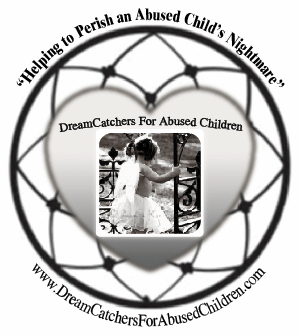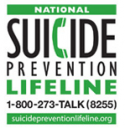The Shadow Of Female Child Sex Abusers
The tragic Little Ted’s nursery case has forced us to face an unfortunate truth: that women use children for sex too.
Susannah Faithfull has been haunted by her mother’s image for all of her adult life. She sees her every time she looks in the mirror, for she has inherited her mother’s startling blue eyes. But every time Susannah is reminded of her mother, she is reminded of a childhood full of trauma. She was systematically sexually abused by her mother; repeatedly hurt by the woman she looked to first for her security, care and support.
“I used to hide in the cupboard under the stairs,” she tells me, explaining that was the only place that she felt safe at home. “My nana had a chenille-type table cloth there and I used to hide underneath it. When my mum came back from work she’d be shouting for me.”
Susannah now runs the Aurora Health Foundation, a treatment centre for victims — or survivors, as some like to be known — of child sex abuse. Her testimony is part of my Radio 4 documentary, Female Sexual Abuse: Breaking the Silence available here:-
http://to-catch-a-female-predator.blogspot.com/2009/10/bbc-radio-4-broadcast-female-sexual.html
Her abuse began when Susannah was very small and her father had left the household. It continued until she herself left home at 16, and throughout all that time her mother forced her to share a bedroom with her, and a double bed. When she told her father about the abuse during a visit, he didn’t believe her.
“The more I cried, the worse it would be. We used to have this rose wallpaper and I used to just look at the roses and wish that I was dead. How can the mother that gave birth to you do those things to you?”
Last week when two women, both of them mothers, pleaded guilty to charges of serious sexual abuse in a Bristol court room, it forced us to confront the reality that Susannah has known for most of her 54 years: that women can and sometimes do sexually abuse the children in their care.
It’s a reality that has always been thought to be very rare. There are a very small number of convictions (2 per cent of all sexual crimes, according to the Ministry of Justice). But when the cases occur they upset us greatly because they challenge every comforting and accepted image we have of women and of mothers in particular.
So just how rare an occurrence is it? The statistics are hard to pin down and some think they may not tell the whole story. We do know that there are now about 50 women held in custody for sexual offences against children, a tiny fraction of the total. We also know that there are some women on the sex offenders register, although we don’t know how many because the Home Office doesn’t keep details of gender.
We also know that those working in the field believe it is an underreported crime because the stigma associated with it prevents victims coming forward.
Detective Superintendent Graham Hill works at CEOP, the Child Exploitation and Online Protection Agency. He heads the Behavioural Therapy Unit and interviews female sex offenders. He believes that as many as one in five of all cases of sexual abuse may involve female perpetrators. “I don’t think there’s a police force in the country that isn’t currently dealing with a female child sex offender,” he tells me, adding that this was just the “tip of the iceberg”.
According to Hill, ten or fifteen years ago most crimes involving accusations of child sexual abuse that the police dealt with were always examined on the premise that the man was the guilty party.
“It was always the case that the female in the family was treated as a potential witness,” he says. “One of our messages to law enforcement officers now is that, when you investigate a serious sexual offence against a child, you should always look at how complicit the female is in that kind of offending.”
And not always just complicity. Hill believes that the public’s perception that female sex offenders usually operate alongside a controlling and manipulative man is often false. He dismisses that stereotypical image as a societal cliché born out of a reluctance to believe that a woman could act so heinously alone and for her own sexual gratification.
“The public’s perception is coloured by the high-profile crimes, the sort of duos in the press. And the thought is that a bad man and a bad woman equal a perfect storm. But what I’m looking at at this centre are women who do have a sexual interest in children in their own right. We even have some examples where women have brought men into their lives just to facilitate sex with their children.”
Bill Jenkins doesn’t know whether his foster mother deliberately took him into care so that she could abuse him. But that was the tragic result and he, like other victims of female child abusers, says that, while he spoke about the abuse at the time, no one investigated it or believed him.
He now runs a company devising and selling software to protect children who are online from harm. He is clearly driven by the memory that no one was there to help and protect him as a child. His abuse consisted of inappropriate touching when his foster mother forced him to bath her. He told me he remembered that the door handles in the bathroom seemed to be quite high. “I suppose that was because I was so small. She was a harsh-looking woman — great big eyes, right in my face. I was always frightened of her.”
That his abuser was a woman makes it more difficult to deal with: “I don’t think any man would feel particularly comfortable admitting that they had been sexually abused by a woman. It is almost like a dark world that has yet to be revealed.”
Dr Michele Elliott knows all about challenging accepted beliefs and trying to expose what Bill calls that “dark world”: she runs Kidscape, a charity set up to support the victims of childhood abuse. In the 1980s, when the issue of sexual abuse by men had only just begun to receive mainstream acknowledgement, Elliott was one of the first in this country to raise the possibility that women could sexually harm children. She was pilloried for it.
“I vividly remember talking at an RAF base about the sexual abuse of children,” she tells me. “I never said anything about women abusing; I didn’t even think that was possible. Afterwards a man came up in his uniform standing very straight and he said, ‘You know, it isn’t only men who do it. My mother did it to me.’ Then he walked out and I was left so shaken that I started to think maybe I should ask questions.” Elliott began to talk about the issue on radio and TV and the response was immediate: “It was like a floodgate had opened.”
Among those who contacted her was a woman who had spent 40 years locked in an asylum after reporting that she had been sexually abused at school by a nun. More than 800 victims have now been in touch with her because of female sexual abuse. But Elliott says that she often feels like a lone voice.
“No one really wants to talk about it. But the professionals are the ones who really annoy me. I’d say that 75 per cent of them are in denial — a mental block. I think there are professionals working in the field who have staked a career on a certainty that it is men who do the abusing. They are very threatened by the idea that that might not be true.”
There is also, among professionals, a very real concern that focusing on the abusive behaviour of a very small minority of women causes unnecessary panic in a society that is already stressed about child safety.
But most of those working in this field welcome a chance to break the silence. They believe that the issue has been underresearched and ignored for too long.
Diana Cant is a psychologist who counsels those who have suffered female sexual abuse. While there are still some who do not believe that female sexual abuse is even possible, given that “women don’t have the necessary physical equipment”, Cant has found that there are many forms of abusive behaviour. These can range from watching inappropriate videos and TV programmes to inappropriate exposure, masturbation, stimulation and penetration.
The harm it does is terrible: “If you think about the experience that we have as children, we expect a degree of safety and security and primary care from our mothers. If that expectation is confounded, something at a very primitive level is broken and gets destroyed. The child grows up immediately with a sense of fear and threat. That can lead to an underlying degree of anger, resentment and fury that colours adult life.”
Tragically the children that women most often abuse are the ones closest to them. Women are less likely to be predatory in their criminal behaviour, according to Hill, although the CEOP does come across occasional exceptions.
“Predominantly the female sex offenders we know about offend against children they know,” says Hill. “They offend in a controlled environment. They tend to stay close to home.”
And they often also tend to stay close to the internet. It appears that, while sexual offending most certainly predates the development of the internet and digital photography, the emergence of both have made offending easier. “These people have always had a sexual interest in children,” says Hill. “But the internet validates and fuels those existing beliefs. And it puts them in touch with like-minded people.”
That the internet is affecting the pattern of offending is clear to everyone involved in this area of criminal behaviour.
Sherry Ashfield, from the child protection charity, the Lucy Faithfull Foundation, is one of the few people in this country who has spent time talking to convicted female offenders. She has seen an increase in the number of women who use chatrooms to meet like-minded adults and then go on to use the web to share obscene and illegal material.
So what do we know about the women who offend and what motivates them? Through her work at Lucy Faithfull, Ashfield has been able to build up a profile of sorts. Although she stresses that these women do come from a wide range of backgrounds, vary in age and personal histories, “they all have very complex personal histories, often with complex issues and experience of abuse,” she says. “They tend to be women with low selfesteem; women who are socially isolated, and who find dealing with emotion extremely difficult. They tend to have a history of depression.”
Their motivation varies too. Ashfield’s research suggests that while some women will abuse to please or keep a partner, others will abuse to meet their own sexual needs. Some may also abuse for money: “We have had women who have had debts who have met someone on the internet who has suggested that if they would take part in making abusive films or pictures of children they would pay them significant sums,” she says.
There is no simple answer as to why women do it. No clear trigger either — although most difficult of all for me to hear was that for some women caring for a tiny, helpless newborn can trigger abusive behaviour. It’s an awful thought; one of many I’ve had to contend with while investigating this difficult subject.
While making this programme my aunt asked me why, when there is so much beauty in the world, must I explore something so ugly? And here is my answer: everyone I interviewed while making the documentary told me how important it was that we examine this crime and force it into the open.
“It’s an issue that has been locked away for too long and we need to get everyone talking about this problem openly and honestly,” says Hill. “That in itself will be a major step forward in our battle against child sex abuse.”
Hill, like the victims and all those I spoke to during this investigation, agreed to talk because they felt that breaking the silence surrounding the issue of female sexual abuse will better help the victims and better protect our children.
http://women.timesonline.co.uk/tol/life_and_style/women/article6860532.ece
By the time you finish reading this, 15 children will have been abused; In the next five minutes, 30 more; Within the next hour, 360 more; And by tonight, close to 8,000+ children will have suffered from abuse, 5 of which will die. Child abuse has increased 134% since 1980 and is now considered a worldwide epidemic. The high jump in child abuse deaths and the shocking increase in statistics highlights the frightening lack of public knowledge.
Educate Yourself -- Learn the Facts
It May Just Save a Child's Life!!


















![Validate my RSS feed [Valid RSS]](http://dreamcatchersforabusedchildren.com/wp-content/uploads/2009/10/valid-rss.png)













Circle lens – Contact Lens Remover | Contact Cases | Discount Contact Lens Cases Says:
[…] DreamCatchers For Abused Children » The Shadow Of Female Child Sex … […]
Posted on December 8th, 2009 at 7:56 pm